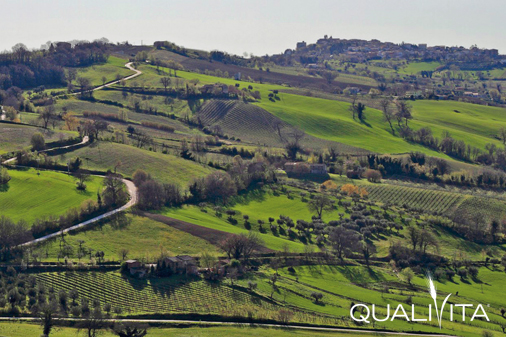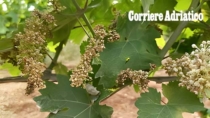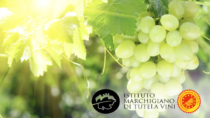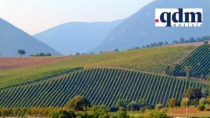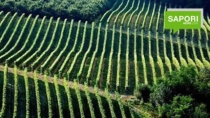Description
The Verdicchio dei Castelli di Jesi PDO is reserved for the following types of wine: White, Spumante and Passito.
Production Area
The production area of Verdicchio dei Castelli di Jesi PDO is within the territory of numerous municipalities in the provinces of Ancona and Macerata, in The Marches region.
Description of product typologies
Verdicchio dei Castelli di Jesi PDO Bianco is soft straw-yellow; the nose reveals a characteristic smell made up of persistent mineral notes, hints of wild flowers, citron and tropical fruit, with a faint aroma of bitter almond; it is dry, fresh and smooth on the palate, offering persistent and intense fruity-floral emanations and intense sapidity. It can display Classico and Classico Superiore on the label. Verdicchio dei Castelli di Jesi PDO Spumante is straw-yellow, varying in intensity and at times with greenish reflections, and has fine, persistent foam; the nose is extremely minerally, with hints of peach, broom and toasted bread; it is fresh and lively on the palate, with a long almondy finish. Verdicchio dei Castelli di Jesi PDO Passito varies from intense straw-yellow to amber-yellow; the nose is enriched with notes of dried apricot and quince, accompanied by hints of honey; the sensations of the nose return on the palate, accompanied by a harmonious, sweet and fresh flavour. Verdicchio dei Castelli di Jesi PDO Passito wines must be produced with grapes that have been dried for a period of time that does not extend beyond March 30th of the year following that in which the grapes were harvested; the vinification process must be concluded by October 15th of the year in which the grapes were produced. Verdicchio dei Castelli di Jesi Passito PDO wine cannot be released for consumption before December 1st of the year following that in which the grapes were produced. Verdicchio dei Castelli di Jesi PDO Spumante can be sold as types ranging from extra-brut to dry.
Geographical and sub-area specifications
The Verdicchio dei Castelli di Jesi PDO designation can be accompanied by additional geographical specifications referring to areas, districts and toponyms within the production area and from where the grapes used to produce the wine effectively originate.




